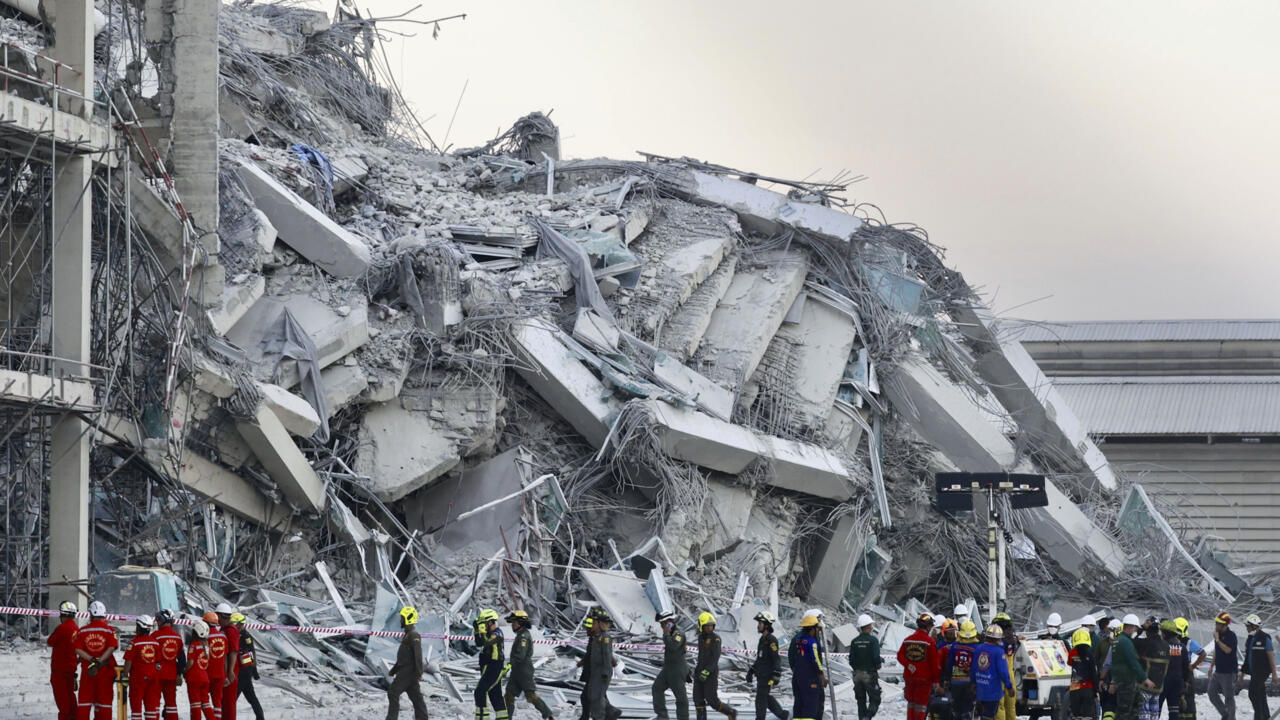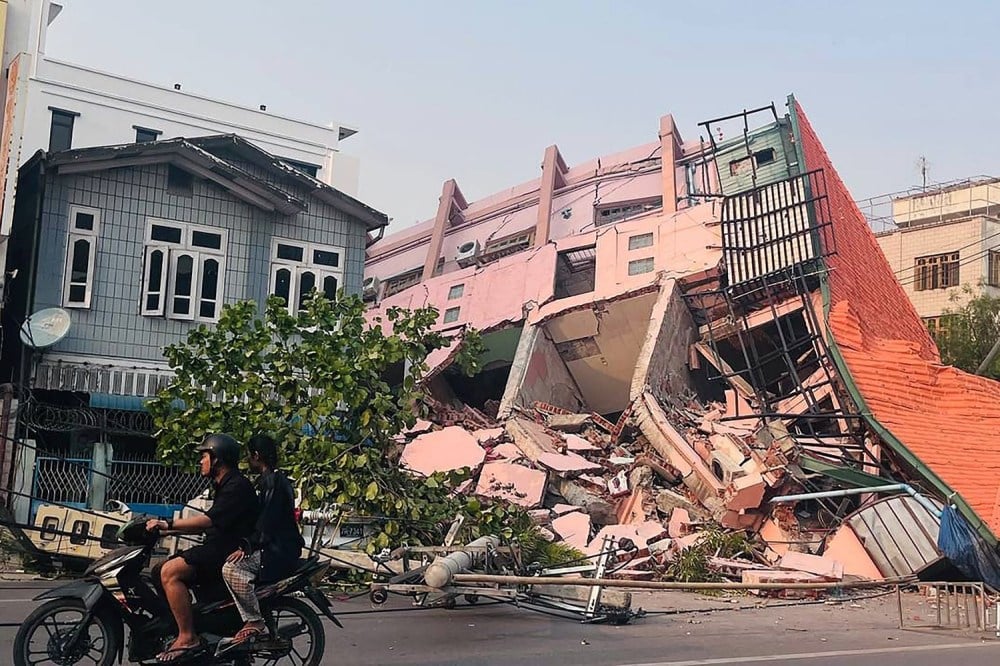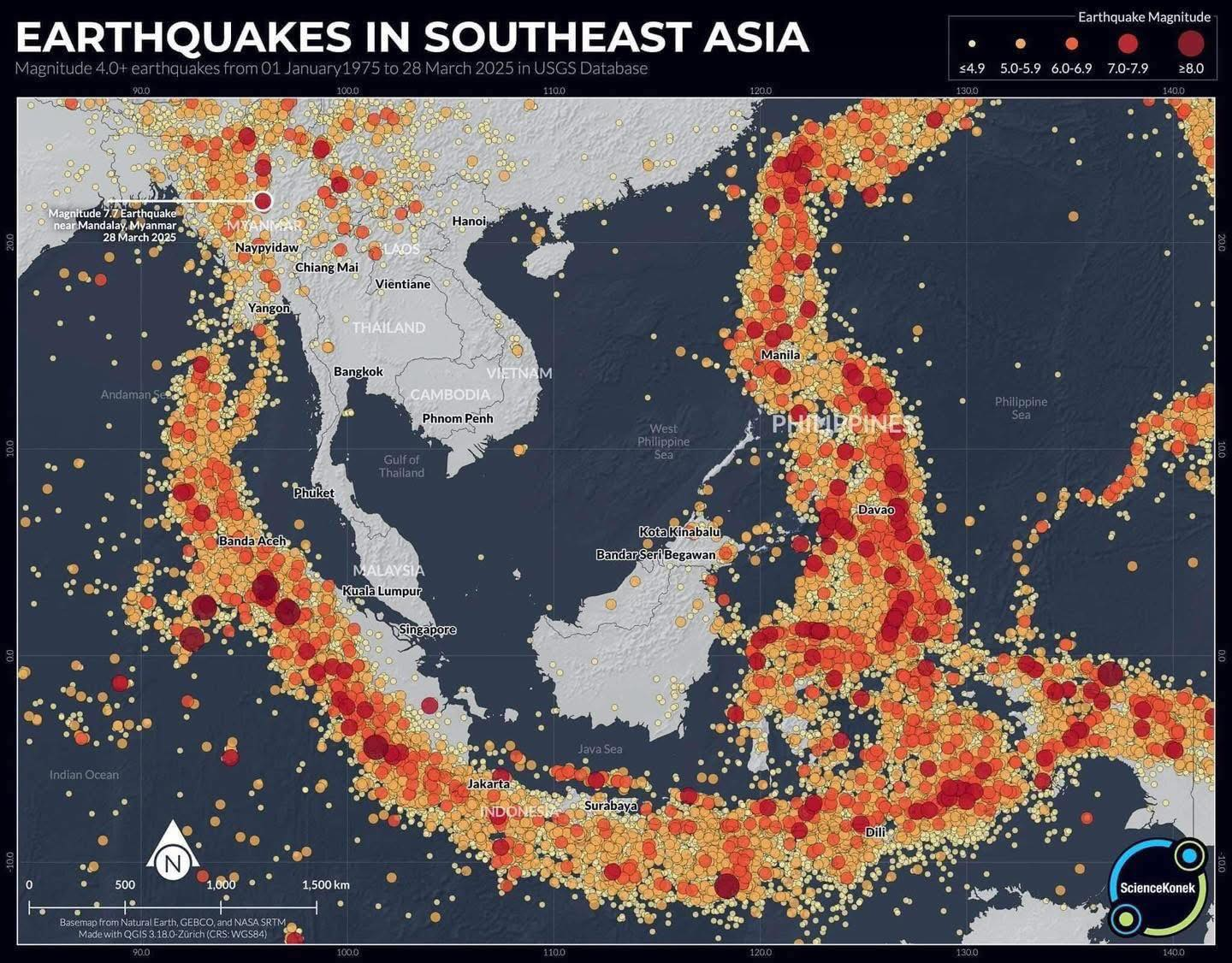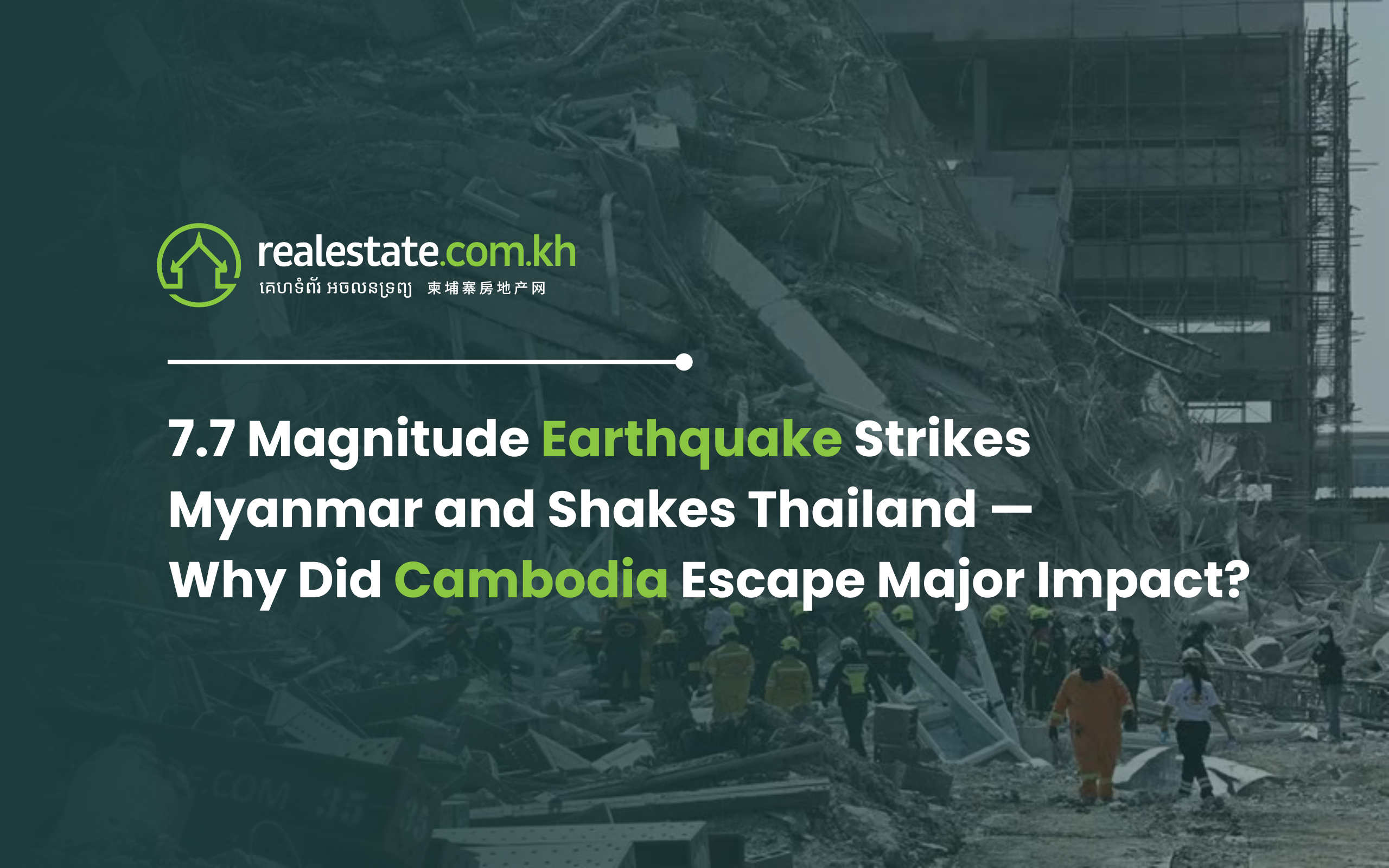A powerful 7.7-magnitude earthquake struck central Myanmar on March 28, sending shockwaves across Southeast Asia and raising concerns about earthquake preparedness in the region. The incident caused widespread destruction in Myanmar, specifically in Mandalay region and other regions such as Sagaing, Naypyidaw, Shan State, and Bago, with buildings collapsing and significant casualties reported as well. In Thailand, cities like Bangkok and Chiang Mai felt strong tremors, causing panic among residents as buildings swayed; in other cases, buildings have also collapsed, causing casualties and a lot of injuries as well.
Even in Cambodia, cities such as Phnom Penh and Sihanoukville reported noticeable shaking, although no damage was reported. While the earthquake’s reach was wide, Cambodia once again avoided the worst, thanks to its stable geological positioning.

Why Do Earthquakes Happen?
Earthquakes are caused by sudden movements of the Earth’s crust, especially along the boundaries where tectonic plates meet. When pressure builds up along these boundaries due to the shifting of plates, it eventually releases energy in the form of seismic waves, leading to an earthquake.

Myanmar sits near the boundary between the Indian and Eurasian tectonic plates, making it one of the most earthquake-prone regions in the world. It has experienced multiple major earthquakes in recent history:
- 2011: A quake in Shan State affected parts of China’s Yunnan and Guangxi provinces.
- 2016: A 6.8 magnitude quake damaged over 100 ancient pagodas in Bagan.
- 2022: A 4.6 magnitude quake struck northern Myanmar at a shallow depth of 12km.
This latest earthquake had a shallow depth of around 10km with 7.7 magnitudes, making its surface impact especially severe. Shallow earthquakes tend to cause more ground shaking and surface damage.
Thailand, which shares a geological connection with Myanmar in the north, also experienced the effects due to the proximity and connected fault systems.
Why Is Cambodia Less Affected by Earthquakes?

(Picture source from ScienceKonek)
In contrast, Cambodia is considered one of the safer countries in Southeast Asia when it comes to seismic activity. This is mainly due to its position away from active plate boundaries. The country lies within the relatively stable interior of the Indochina tectonic block, where there are no major fault lines or significant crustal movements.
While Cambodia may occasionally feel tremors from neighboring countries’ earthquakes, the thoughts of experiencing a strong, damaging quake are pretty low.
Staying Prepared: The Role of Earthquake-Resistant Design
Even though Cambodia is in a low-risk zone, the tragedy in Myanmar serves as a powerful reminder that preparedness is still essential.
As urban development and building density increase in cities like Phnom Penh and Sihanoukville, the potential impact of even a moderate earthquake could be significant. The construction sector must take proactive steps to build resilience into the country’s urban landscape.
Key recommendations include:
- Adopting earthquake-resistant building standards, especially for high-rise buildings, schools, hospitals, and other public infrastructure.
- Inspecting and reinforcing older buildings, particularly those built before modern construction codes were introduced.
- Raising public awareness and improving emergency response readiness through drills and education campaigns.
A Wake-Up Call for the Region
The Myanmar earthquake is not just a natural disaster — it is a wake-up call for all countries in the region to assess their readiness and resilience. While Cambodia may be less vulnerable due to its geography, complacency is not an option.
Respecting the power of nature means being prepared — planning ahead, building safely, and educating the public. Disaster prevention is not just about reacting; it’s about building a culture of safety that can protect lives and communities when it matters most.
Realestate.com.kh extends our heartfelt condolences to everyone affected by the recent earthquake in Myanmar and Thailand. Our thoughts are with the victims, their families, and those who have been injured. Please stay safe — we wish you strength and recovery during this difficult time.




Comments